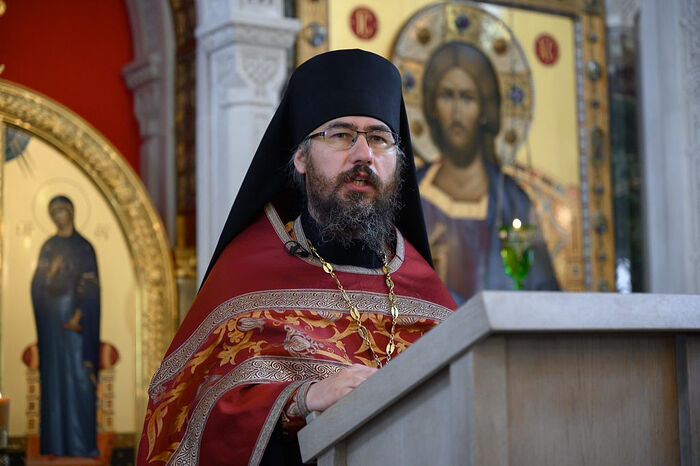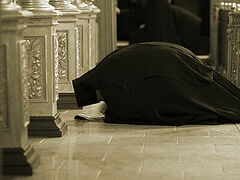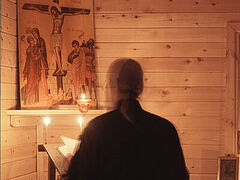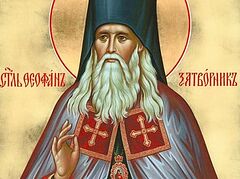It’s impossible to reach an endpoint in faith. Every day and every minute of our life, we learn how to love our Creator and act according to His commandments. Any one of us, even those who have gone to church for many years, would occasionally question and doubt things. In our quest to find the answers, we appeal to the holy fathers who left their writings, our precious spiritual heritage, and to our priests, the spiritual counselors. A get-together over a cup of tea with the brethren of the monastery presents an opportunity to discuss the issues causing much concern. Just as Hieromonk Irinei (Pikovsky) said at the beginning of one of these meetings, they are good for general development, while the range of topics discussed will equally apply to each and every one of us.
—Father Irinei, bless! Could you suggest a way to prayer the Jesus prayer undisturbed by any distractions? What are the basic rules one needs to follow in order to avoid falling into demonic delusion or prelest?
—The Jesus prayer isn’t a technique for battling with the evil spirits. At the same time, the Jesus prayer is a spiritual sword used to repel demonic provocations. However, in terms of a learning technique to use this prayer, it has nothing in common with the way we learn to play sports. With the Jesus prayer, we can’t use a linear or a step-by-step approach. Moreover, we know how The Way of a Pilgrim, a book that gained popularity in the nineteenth century, described a peculiar teaching about this prayer and how it drew immediate criticism from Holy Hierarch Ignatius (Brianchaninov). Later, in the twentieth century, the book was criticized by our contemporaries—spiritual fathers from Russia and Greece. Why? Because this book connected the technique with counting, or the number of times you say the prayer during the day and at night, and a particular bodily position with the head lowered and the eyes focused upon the area of the heart. Besides, it emphasized the role of breathing so that the whole prayer was pronounced while exhaling: “Lord Jesus Christ, the Son of God, have mercy on me, a sinner.”
However, the entire Jesus prayer can only be said in one breath by someone blessed with particularly powerful lungs, in a restful state, and while taking deep breaths. The winner, in terms of its length, is the Greek Jesus prayer containing only five words, a more concise and once-popular variation: “Lord Jesus Christ, have mercy on me.” It does result in a lightning-fast prayer in Greek: “Κύριε Ιησού Χριστέ ελέησόν με.” This prayer can be spoken in one breath.
First of all, what actually matters is not the number of prayers but their quality. Secondly, it is wrong to liken what the Bible calls the “heart,” namely, the center of personhood of man and his inner self, to a certain body part. Thirdly, it isn’t the rhythm of inhale-exhale that matters, but what man experiences during prayer.
Twentieth century Athonite elders, such as Joseph the Hesychast and his disciples, known for the revival of hesychasm, have greatly emphasized obedience and spiritual guidance in the process of mastering the art of prayer. Therefore, it appears that any prayer, and most particularly the Jesus prayer, yields fruit only when a man’s heart has been purified. The Jesus prayer doesn’t replace man’s struggle with passions but complements it. Only after a person has cut off the first passion of willfulness will the Jesus prayer bear its worthy fruit.
I would also suggest reading the writings and the articles about prayer by St. Ignatius (Brianchaninov). There is another book I would recommend: About Prayer by St. Theophan the Recluse. One should frequently partake of the Holy Mysteries of Christ—it isn’t only about practicing hesychasm. The Jesus prayer and the life of silence can’t be considered separately from the ongoing fight with the passions, the liturgical and Eucharistic life.





